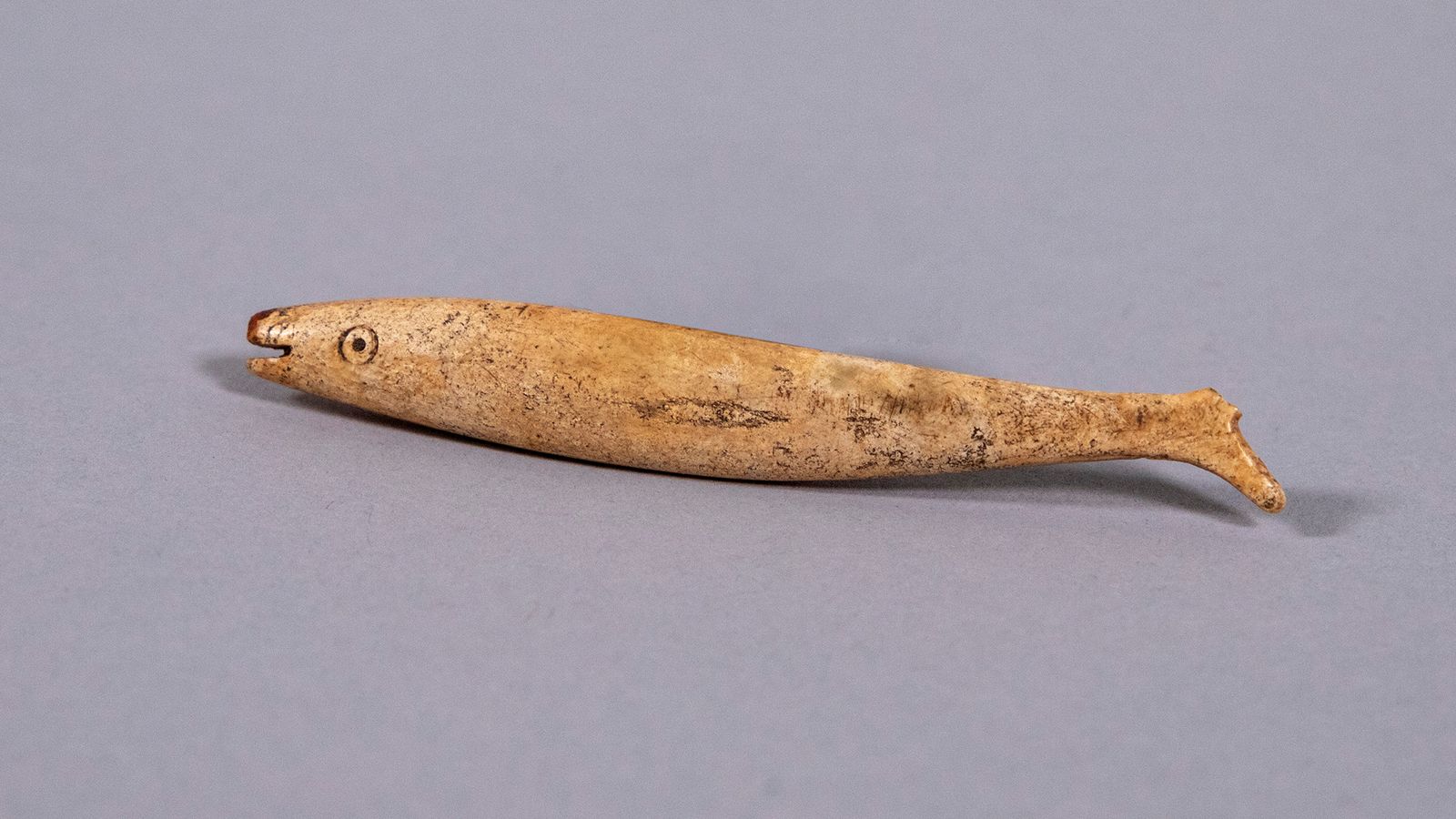A 200-year-old fish figurine that may have been used in an old card game has been dug up under the Palace of Westminster.
Researchers believe the intricately carved token, made from animal bone, may have been used in a game called “Lottery Tickets”.
The game, popular in the 18th and 19th centuries, and mentioned in Jane Austen’s 1813 novel, Pride and Prejudice, involves two players attempting to match their cards to the values of those in the middle of a table.
The winner of the round claims a fish token, like the one found by archaeologists.
Its discovery was made by Roland Tillyer, senior geoarchaeologist at the Museum of London Archaeology (MOLA), as part of a major project to restore the Palace of Westminster.
He found the item while monitoring the digging of a borehole deep in the earth under the House of Lords’ Royal Court.
Diane Abrams, the archaeology lead of the Houses of Parliament Restoration and Renewal Programme, described the gaming token as a “wonderful” find.
Staff could sue employers if customers offend them under new law – but MP denies ‘banter bouncers’ will be needed
MPs debating Illegal Migration Bill clash as Tory criticises ‘swarm’ of arrivals
TikTok to be blocked from parliamentary devices and network over cyber security fears
“It certainly highlights the value of the palace’s ‘hidden’ archaeology beneath its buildings and spaces and how even a single find such as this can contribute to its overall sense of history and our literary past,” she said.
Michael Marshall, a team leader of the discovery unit at MOLA, said: “Counters like this were commonly used at gaming tables in Britain during the 18th and 19th century and were used as tokens for scoring.
“A famous literary description of this practice comes from Jane Austen’s Pride and Prejudice [published in 1813] where Lydia Bennet is described as winning and losing fish while playing games of ‘lottery tickets’.”
What else has been found under Westminster?
The find follows the discovery of a section of the original medieval Thames River wall, believed to run underneath the length of the Houses of Parliament.
Medieval timber structures, thought to be part of a river defence system, were also discovered during an excavation of Black Rod’s Garden in 2015.
Read more:
Archaeologists find one of the largest ever Anglo-Saxon burial sites
Roman burial site unearthed in excavation of hidden Leeds cemetery
Previous ground investigations over the past few decades have uncovered an array of historical artefacts, including a centuries-old sword and buried fragments of King Henry III’s high table.
Those behind the restoration project say they have now carried out a milestone 7,500 hours of specialist intrusive and disruptive surveying work since July 2022.
The work, in addition to the tens of thousands of hours of planning and visual inspection research completed since 2018, will inform decisions about the restoration work.
Last year, a report by the Houses of Parliament Restoration and Renewal Delivery Authority suggested a project to revive the Palace of Westminster to its full glory could cost up to £22bn and take up to 76 years.
The authority made an agreement to preserve the palace, which was rebuilt in 1876 following a devastating fire, and to seek independent advice and assurance on the new approach to the works.
While there are dozens of restoration projects already under way, the future scope of the main restoration works is not yet certain – until approval is given by MPs and the Lords to costed proposals.
Be the first to get Breaking News
Install the Sky News app for free
A vote on how to push forward with the work is expected by the end of 2023.
David Goldstone, CEO of the Houses of Parliament Restoration and Renewal Delivery Authority, said: “We’ll take the important data from this extensive research to inform our future restoration plans for the building, ensuring that we tackle critical issues and preserve and protect the building and the thousands of staff and visitors that use the building every day.”






















